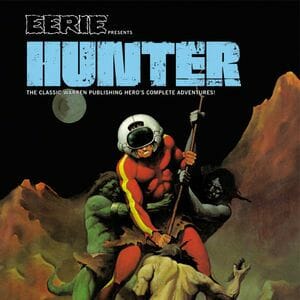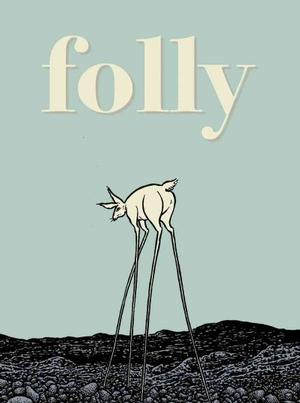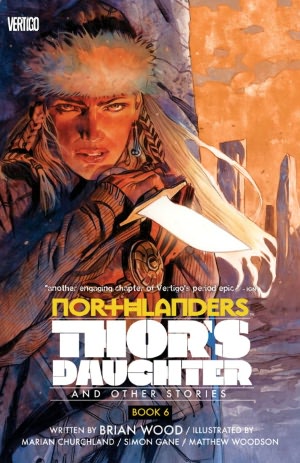
Each week, Paste reviews the most intriguing comic books, graphic novels, graphic memoirs and other illustrated books.

Kolor Klimax: Nordic Comics Now
by various artists, edited by Matthias Wivel
Fantagraphics, 2012
Rating: 7.6
Intended as the first of a multivolume series focusing on contemporary Scandinavian comics, Kolor Klimax is, like many anthology projects, of mixed quality, although the printing and production are both almost entirely excellent (the decision not to number pages can be frustrating). The names here are mysterious, but the book makes a good case for many of the artists to be better known, which seems to be its intent. Tommi Musturi’s “Samuel” stories, for example, several of which are included, are colorful, wordless, and Zen-like in their focus on the here and now. Joanna Rubin Dranger’s “Always Prepared to Die for My Child” is another highlight, with simple drawings that manage to convey a lot. And Jenni Rope’s minimalist stories, which nearly bookend the volume, are poetic and impressive. Other offerings are annoyingly, deliberately amateurish, an aesthetic that carries a high degree of risk and doesn’t pan out in many cases. The number of woman cartoonists is also worth noting, partially because there’s no attention called to it. Kolor Klimax is a good first offering and may well indicate a series worth revisiting. (HB)
Northlanders: Thor’s Daughter
by Brian Wood, Marian Churchland, Simon Gane and Matthew Woodson
Vertigo, 2012
Rating: 8.6
The final issue of Northlanders may have launched last week, but one gets the sneaking suspicion that Brian Wood could have carried on his old world blockbuster for decades. The series has proved consistently excellent, sculpting a brazen world filled with iconic characters who still feel incredibly vulnerable and real. Wood spent a year researching Viking sagas and epic poems for the title, and it shows. The language, garments and overall context swallow the reader into a hyper-violent history lesson. Penultimate collection Thor’s Daughter features the storylines “The Siege of Paris,” “The Hunt” and the titular one shot. The first tale is the standout, projecting the sheer exhaustion and depravity of a mercenary crew that launches a year-long attack on the French capital only to be devastated by a tower of defending archers. Simon Gane’s textured massacres will make you feel filthy after finishing the three-issue arc. The middle chapter is a beautiful, meditative survival tale that wouldn’t feel out of place in a Jack London compilation. Finale “Thor’s Daughter” doesn’t pack the punch of its forebears, but still tells a compelling story of an orphaned teen with warm art that could have stretched its legs into more issues. The tragedy is that Northlanders is ending at a time when similar swords and siege fare like Game of Thrones and Assassin’s Creed is making a mint in other media. Though Wood is still consorting with barbarians over at Dark Horse’ Conan, it’s a shame this epic couldn’t have lasted a few more volumes. (SE)

Eerie Presents Hunter
by Paul Neary, Rich Margopoulos, Budd Lewis and Bill DuBay
Dark Horse, 2012
Rating: 8.0
Published originally as a recurring story in Eerie, the horror comics magazine created by James Warren to get around the restrictions of the comics code authority, Hunter is a surprisingly well written and drawn comic. Its first appearance was in 1973, when Paul Neary and Rich Margopoulos created it, and although it went through several iterations, the story of the demon hunting titular character managed to be reliably compelling. Although it’s not famous, it should have been, and its influence can be felt in later products of the era. It seems not unlikely, for example, that George Lucas cribbed both the wise-cracking tone of Hunter II and the iconic helmet both Demian Hunter and Karas Hunter wear. At very least, it embodies both the aesthetics and the disillusionment of its era, without being either ugly or depressing. Its narratives are mostly well worked out, Neary’s art intricate and creative in its use of Zip-A-Tone, and the prose a weird delight, full of sentences that call to mind Raymond Chandler if he’d ventured into sci-fi. Dark Horse has done us all a service by republishing Hunter in a stand-alone volume. (HB)

Folly: The Consequences of Indiscretion
by Hans Rickheit
Fantagraphics, 2012
Rating: 7.0
Folly collects scattered strips and sketches from the creator of The Squirrel Machine, a beautifully disgusting graphic novel from 2009 that searched in vain for a story. Hans Rickheit’s shorts and asides are as grotesque and graphic as that full-length work, but largely eschew any attempt at narrative. Rickheit’s dreamlike sequences tend to follow a similar pattern, with a lead (or leads) wandering through a weird chain of encounters with various animal/human hybrids or inanimate lumps of flesh and blood that often sport vaginas where they don’t normally belong. Between the heavy cross hatching and almost wood-carved appearance of Rickheit’s art and his fixation on the degraded physical form, Folly often looks like a Jan Svankmajer film or Tool video adapted by Geof Darrow or Jim Woodring. Rickheit’s work is visually striking and the almost total lack of narrative pretense precludes the same disappointment that undermined The Squirrel Machine, but his visual obsessions grow repetitive and tiresome. Also his one (intentionally overstated) stab at political commentary is just plain ugly. Folly is a gorgeous but uncomfortable collection best enjoyed a few pages at a time. (GM)
